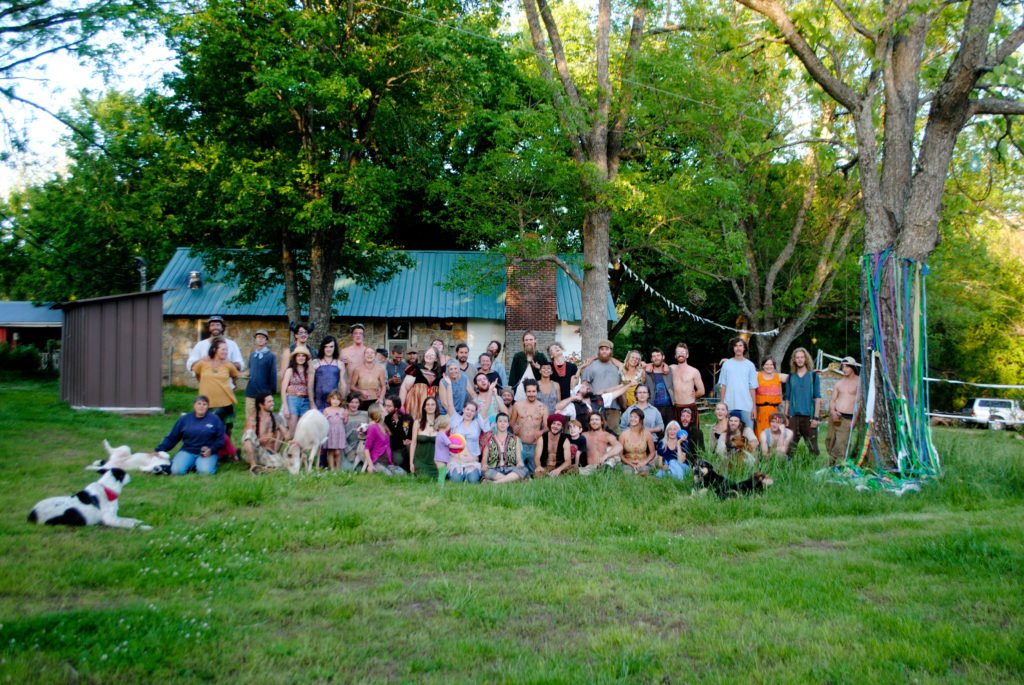
East Wind is located on nearly 1,200 acres of primarily forested land in the beautiful Missouri Ozarks. The cooler months of the year are the time for forestry. The undertakings of East Wind’s forestry team include cutting and gathering firewood, harvesting and milling logs on our sawmill, and clearing and maintaining the roads. In addition to owning and operating our own sawmill, we also possess a tractor, a heavy duty skidding winch, a gas-powered log splitter, a wood chipper, professional climbing gear, and a small fleet of chainsaws and handsaws. We also have two dedicated forestry trucks- a 1-ton dump truck and a 1-ton flatbed.
Foresters who participate in the forestry program have a deep respect and appreciation for nature and for the land we call our home. We respect the other forms of life with whom we share the land and make every effort to create a positive impact on the environment we have chosen to steward. We regularly survey the land to observe the health of the forest and our effects on it, keeping an eye out for diseases that may be harmful to our trees (Dutch Elm Disease, Oak Wilt, etc.). We are appreciative of the natural resources the forest provides in such abundance. The firewood that gives us warmth and the lumber that allows us to build and create are certainly among these gifts.
All of the personal shelters in community use wood heat, as well as some of our larger buildings and communal spaces (currently, the largest residences use electric heat). Firewood is a necessity during the winter months. Cutting, splitting, hauling, stacking, and curing enough firewood ahead of this time is a priority. Fortunately, firewood is plentiful, and we are able to continually harvest sustainably by collecting wood from the forest floor and by felling dead standing trees.
We also maintain the few existing dirt roads on our land by clearing away fallen trees and branches and creating drainage ditches. We use our wood chipper to clear and utilize brush, creating wood chips for our gardens and orchards. Though much of the work we do takes place out in the woods (on what we call “the New Land”), it is occasionally necessary to fell or prune diseased or dead trees near buildings in community as well.
Before 2012, we used a 50 HP gas powered carriage drawn sawmill, but the building that housed it had collapsed from a log loading accident. That coupled with the engine being manufactured in 1943 and parts being hard to obtain, we decided to buy a new sawmill. In the spring of 2010, we demolished an abandoned and dilapidated house to create space for the new sawmill site (and had lots of fun doing it!). We had purchased a new sawmill in October of 2012- a portable 25 HP diesel swingblade sawmill.
Newcomers are welcomed and encouraged to learn and help out.
Before live trees lose their leaves in the autumn, we scout out recently deceased standing trees near the road and mark them to be cut (some dead trees are left standing to provide homes for wildlife). During the winter, the marked trees are felled and brought to our sawmill to be made into lumber, as well as logs from trees that have naturally fallen. We most frequently mill black oak and white oak, and occasionally mill red oak, black walnut, cedar, cherry, ash, and black gum. When we choose to fell live trees for the purpose of lumber, posts, or firewood, we practice low grading (this entails selecting the poorest species or specimens and thinning them out to make room for healthier, more “desirable” trees).

